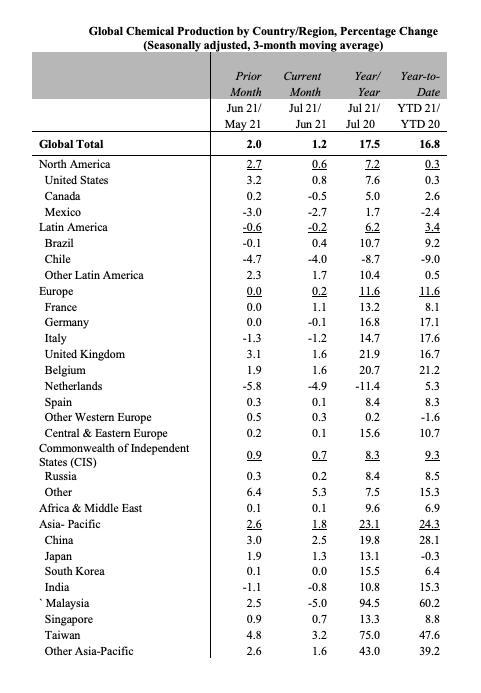While the Shell headlines today are probably the biggest news, it should not be a surprise to anyone that earnings are lower in 4Q than they were in 3Q, as all of the market indicators have been telling us this for months, and Dow made a statement to this effect in early December. Given the location of Shell’s Norco facility, it took a full hit from Hurricane Ida and the company made several statements at the time regarding delays to restarts. We expect other chemical companies to post meaningful declines in earnings for 4Q relative to 3Q 2021, but unless, like Shell, they experienced meaningful production outages, we would still expect 4Q results to be above “normal” and higher than earnings in 2019. We still see share prices for the public companies as very low looking at values relative to 2019 and earnings relative to 2019, but the negative momentum in earnings is more important to investors today than the absolute level of earnings. As we have stated in prior work, we need to get through negative revisions before the sector could look interesting. The exception, as noted in our Daily Report today, could be PVC, where pricing could look better than is already implied in 2022 estimates and valuation. A positive tone in upcoming conference calls may be a turning point for the PVC-related stocks – Westlake primarily. We could see the trend in the chart below reverse.
Some US Polymer Markets Are Much Better Positioned Than Others - Watch PVC
Jan 7, 2022 1:51:14 PM / by Cooley May posted in PVC, Shell, Lumber, PVC Margins, Westlake, PVC prices, Building Products
The ACC Forecasts Look Too Conservative To Us
Dec 9, 2021 2:15:01 PM / by Cooley May posted in Chemicals, Polymers, PVC, Polyethylene, Plastics, Polypropylene, Ethylene, Auto Industry, Shell, ExxonMobil, petrochemicals, Sabic, natural gas, natural gas prices, Baystar, Basic Chemicals, manufacturing, polymer production, specialty chemicals, ACC, Polyethylene Capacity, US manufacturing, plastics resin
The ACC forecasts below leave us a little confused as the implication for specialty chemicals is that production declines in the US by an average of 2.0% per annum from 2019 to 2023. Given the demand that we are seeing for US manufacturing, as covered in our most recent Sunday Report, we would expect demand for all inputs to rise and it is unlikely that the gap would be filled by a swing in net imports. The lower demand from the Auto industry in 2020 and 2021 and broader manufacturing shutdowns in 2020 explains the 2020 and 2021 numbers to a degree, but it is not clear why there would not be a rebound as auto rates increase. We would also expect to see a stronger rebound in polymer production in 2022, assuming weather events are less impactful than in 2021, given substantial new capacity for polyethylene from ExxonMobil/SABIC, BayStar, and Shell.
Upcoming Polyethylene Capacity Additions Are Unlikely To Go Unnoticed
Aug 27, 2021 12:58:28 PM / by Cooley May posted in Chemicals, Polyethylene, Ethylene, Shell, ExxonMobil, Sabic, Baystar, ACC, Polyethylene Capacity
The advanced nature of the ExxonMobil/SABIC project, which we have discussed previously, is another cause for concern around US polyethylene market strength for a couple of reasons. First, it is only the first wave, with Baystar and Shell hot on the heels in 1H 2020. Second, it will add another ethylene seller in the US – SABIC – and this may be enough to cause some ripples. If you look at this in the context of the Asia production growth data provided by the ACC (below) there should be a significant cause for concern around the global balance for many products. Some of the specific Asia country growth, year on year and year to date, is driven by COVID-related shutdowns in 2020 – Taiwan and Malaysia for example – but the bulk of the China growth, which is more significant in absolute volume terms is from new capacity. China’s ability to sell surpluses internationally is hindered by the current logistic problems, but these will not last, and we should also factor in where the material will go that had been imported into China. The global polyethylene market could look very different in 2022, although all eyes will be focused on Hurricane Ida for the next week. See more in today's daily report.




